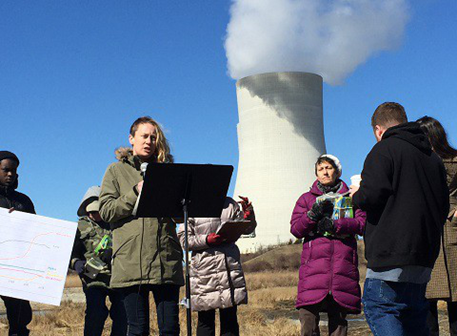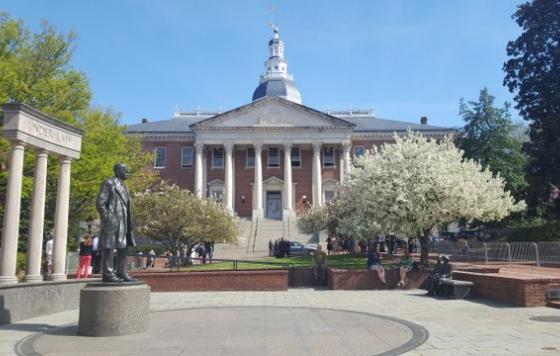
From the beginning of my internship here at Clean Water Action (CWA) talk has circulated throughout the office about the Brayton Point power plant in Somerset, MA, and the revolution that can begin at this site. From just the topic itself I was already interested in not only learning more about the plant, its history and what it has the potential to become but I was also extremely excited to be a part of the change that will inevitably come to this site.
I was given the opportunity to go and visit the Brayton Point site, and weeks prior to my visit to Somerset, I was charged with the duty to proofread an important document: a report issued by Synapse Energy Economics Inc. The report was commissioned by CWA and partners including the local Coalition for Clean Air South Coast with the purpose to serve as a guide to assess the options and the repercussions of those actions for reimagining the Brayton Point site into an energy generator that is more green and sustainable. It was through this document revision that I got to really see what the possibilities for Brayton Point are and what the people of Somerset are going to be a part of.
View a two-page summary of the report here.
With the green movement beginning to really take root within the hearts and minds of everyday people we begin to see life style changes take place. These changes can range from anything to simple matters like turning off the lights when a room is no longer being used to taking out your phone charger when you are finished using it. It’s these small changes that when done on a larger scale can transmit to lower energy demand and a reduction in an energy plant’s energy output. The document produced by Synapse spoke about how Brayton Point was becoming costlier to run than to actually generate energy and it is for this reason that plant is closing in 2017.
What I found to be the most fascinating it is that the report recommended that 3 main energy alternatives – off shore wind, solar and anaerobic digestion or a combination of the 3 – can be used in the place of Brayton Point’s current coal fired generators. Reading about a place that has the potential to generate clean energy on a large scale, put money in the town it’s located in and serve as a guide for the same techniques to be used elsewhere around the globe is just the place I want to be.
I was given the chance to visit the actual Brayton Point site in Somerset for a press release that showed the public and anyone watching the news or who attended that the area has a green potential and it can actually impact the lives of residents of southern Massachusetts. When I first arrived to the town of Somerset the first thing I saw while getting off the exit were the large cooling towers that resemble a nuclear power plant and large stacks of steam spewing out from the top of them. My first thought was this is what draws the eye to the town of Somerset; this structure has the ability to draw many people to the Somerset area, and if the plant can have this effect on me, I can only imagine what the effect a green energy hub could have on anyone else who comes to the area.
When I finally got on site I was pretty impressed that such large structures like the cooling towers could even be made, but what I found to be even more impressive then the sheer size of the cooling towers was the large black mound of coal that sat directly next to the plant. As the press release started and my supervisor Becky Smith spoke about the plans for the site, the report by Synapse and answered questions that the reporters asked her I could not help but look at the enormous mound of coal across the water from us and think to myself, “What if this mound or the energy produced from this mound of coal was replaced or sourced by solar panels or an anaerobic digester? What if, when you looked out to the horizon on the shoreline near the plant, you saw wind turbines in the distance spinning?” I envisioned a green future for the town of Somerset and for Brayton Point. The local activists and we are fighting to make that vision a reality.



